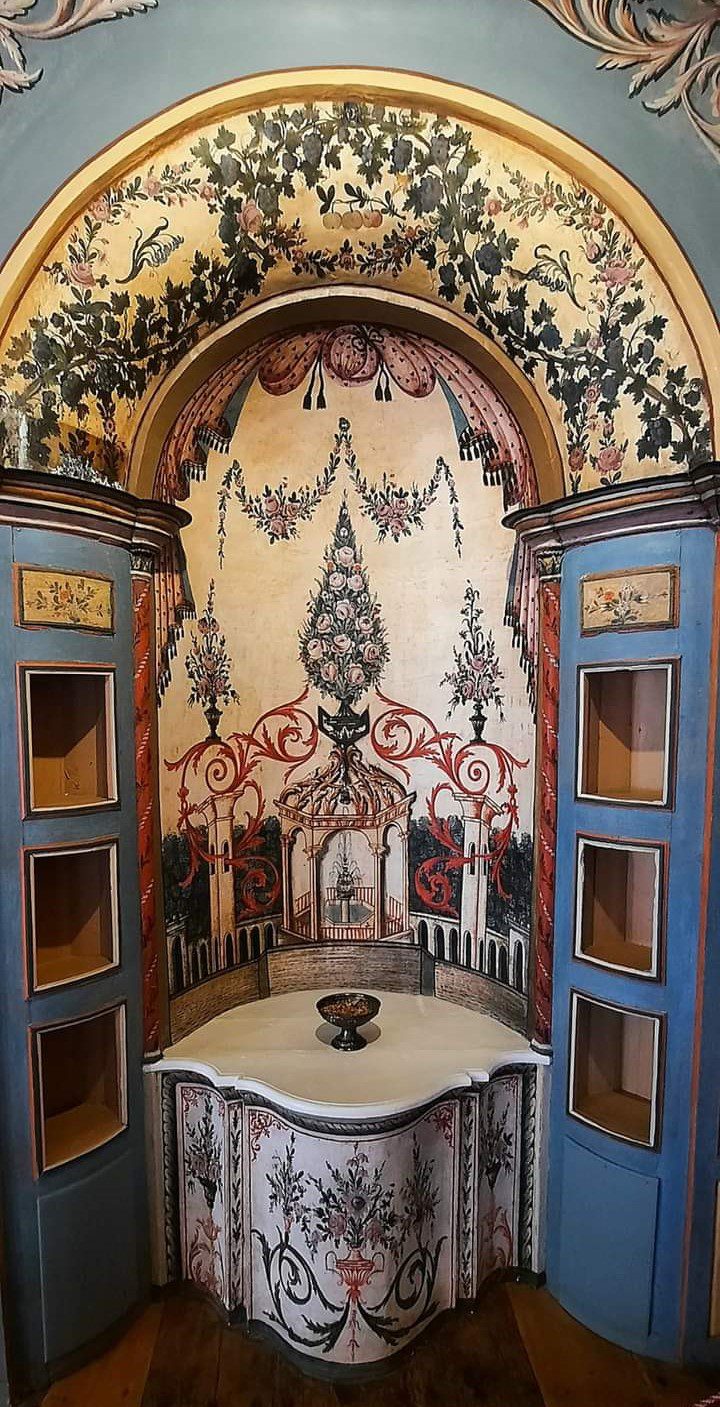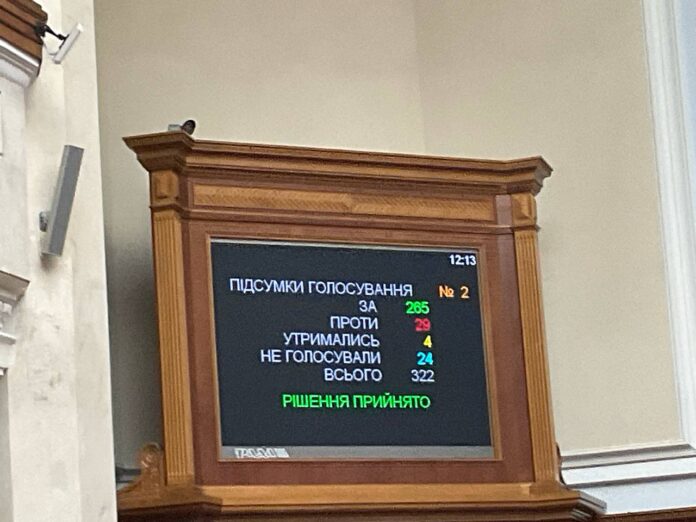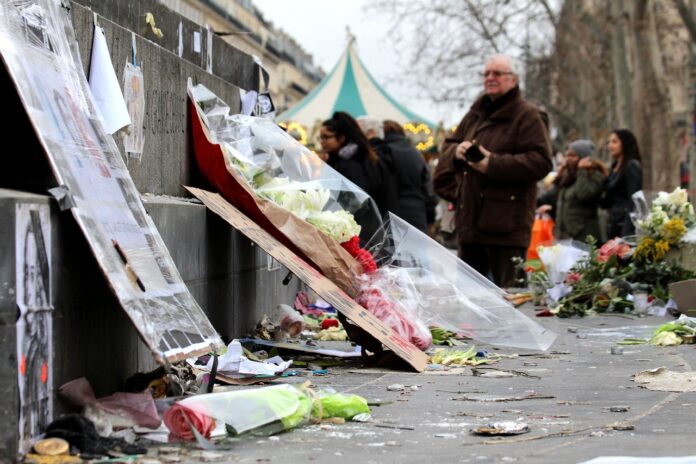By Prince Evgeny Nikolaevich Trubetskoy
By asserting the unlimited autonomy of subjective religious experience, Berdyaev attacks Fr. Florensky precisely for his aspiration to subordinate this experience to some objective beginning; in other words, for the fact that he invests in the belief a mental content independent of the inner experience of the person. And reproaches Fr. Florensky because he affirms external revelation and “demands a transcription of religious experience in terms of transcendent ontology.” From Berdyaev’s point of view, all this is rational scholasticism, which should be rejected. The sophisticated religious psychology of Fr. Florensky “passes with him into scholastic theology; the dogma of the Trinity, as external and transcendent to mystical experience, inevitably turns out to be theological’. Theology always rests on the idea of external revelation, and is opposed to mysticism as resting on the idea of inner revelation. Theology is transcendentalism, mysticism is immanentism.” In Berdyaev’s opinion, “scholasticism in disguise” is a candle. P. A. Florensky is “inevitable punishment for any admission of dogma to and in spiritual life, to and in mystical experience”.[14]
The principle that N. A. Berdyaev opposes to Fr. Florensky, is absolute freedom – the “cognitive eros” that is not restrained by dogma, nor by logic, nor by any objective principles at all; more precisely: a boundless arbitrariness of subjective mysticism. As Berdyaev himself admits, the characteristic feature of his “new” religious consciousness is his conviction that “at present the world is entering an era of anthropological revelation, the end of which must be taken upon by man himself, at his own risk and fear; that divine revelation passes into and through man and continues. This is entering the age of religious adulthood”.[15]
For the reader who is at least somewhat familiar with the history of Christian and Protestant religious sectarianism in particular, there is hardly anything very new and significant in this “new” religious consciousness. As a warning to Fr. Florensky, however, N.A. Berdyaev’s point of view retains some importance, which is why we need to dwell on it here for a bit.
It is obvious that this unlimited freedom of the human individual – “at his own risk and fear” to determine the true revelation, means in practice a final cancellation of the latter, a complete loss of any common religious principles that bind people in one. Where the criterion for the truth of revelation is simply the subjective “religious experience” of the individual, there are obviously as many conflicting revelations as there are people. Clearly, such a view is self-defeating. In the eyes of Berdyaev, does his subjective revelation deserve any greater respect compared to this objective revelation of the Church against which he is rebelling? In the name of what, on what grounds? After all, Berdyaev’s references to his “intuitions” cannot have an external authoritative meaning for other people, and even for the person who experienced the “intuition”, there is always a possible doubt: was it an authentic revelation, a subjective hallucination or an apparition of Satan in the image of the Angel of Light. Those who deny, like Berdyaev, any objective criterion in religion, for him these doubts are unconditionally insoluble.
Thus, the weakness of Berdyaev’s religious point of view is more than obvious for Fr. For Florensky, it would not be a serious danger if he stood completely consistently and firmly on the point of view of the dogmatically determinable and definite objective revelation. Unfortunately, however, in the church views of Fr. Florensky observed an inconsistency, thanks to which he was defenseless against Berdyaev’s objections, and the religious subjectivism of the latter grew into a serious danger for him.
The source of this danger lies precisely in the aforementioned tendency of Fr. Florensky to alogism—in his fascination with that current fashionable trend in religious philosophy which proclaims the subjective experience of individual “religious experience,” unverified by thought, as the supreme criterion in religion. In this direction, he makes an extremely significant concession precisely at this point, where religious subjectivism should meet the strongest resistance from his side – in the teaching about the Church – and precisely with this he gives Berdyaev the opportunity to hold an easy victory over him. As we have already seen, when it comes to Christological questions or the mutual relationship of the persons of the Holy Trinity, Fr. Florensky insisted on the need for such “mathematically precise” dogmatic definitions that would exclude the possibility of different religious interpretations from the point of view of “individual religious experience.” Whatever the “experiences” of this experience may be, it does not depend on the discretion or “inspiration of the individual” whether he will regard the Son of God as “one-person” or “sub-divine”, whether he will recognize in Him one or two natures, whether he will he believes or he will not believe in the inseparability and non-fusion of these two natures.
Such should also be the point of view on the Church. Here, too, a firm dogmatic definition is needed, which would teach people to distinguish the true church from the false one and, in this sense, set some limit before subjective “dare.” However, due to some strange inconsistency, whenever it comes to the Church, Fr. Florensky is attacked by some fear of thought and he becomes an apologist for logical, and in the given case also dogmatic formlessness.
He finds that the Church, as the fullness of divine life, “cannot be laid in the narrow grave of logical definition.” “Let,” he says, “neither I nor anyone else be able, and certainly not succeed, to define what ecclesiasticism is!” Let those who try to do this challenge each other and mutually deny the formula of ecclesiasticism! This very indeterminacy of ecclesiasticity, its elusiveness for logical terms, its ineffability, does not all this prove that ecclesiasticity is a special life, a new life given to man, but, like all life, inaccessible to reason” (p. 5).
When Fr. Florensky speaks of dogmatic definitions concerning other mysteries, he is not misled by the ambiguity of the word “definition.” He knows well that to “determine” dogmatically, this does not mean to exhaust the religious mystery by means of a reasoning formula, to lay it down without a residue in concepts. He is not disturbed by the application to these mysteries of concepts such as “Being”, “essence”, “Person”, “nature”, etc. sub., because he well understands that in the given case the concepts in no way claim to be an exhaustive expression of what they denote, but only play a necessary role of barriers to thought, guarding a certain content of faith against its possible mixing with something untrue or impure. Why, then, when it comes to the Church, does he deny the need for these epithets, and think it possible to leave in this case the religious feeling of the individual without any highly sanctified dogmatic, mental support?
In relation to the Church, he replaces this dogmatic criterion with an aesthetic one – in his thought, the only criterion for ecclesiasticity is beauty. “Yes, there is, he says, a special spiritual beauty, and it, elusive to dogmatic formulas, is at the same time the only true way to determine what is Orthodox and what is not.” Those who know this beauty are the spiritual elders, the masters of the “art of art”, as the holy fathers call asceticism. Spiritual elders have, so to speak, “acquired a skill” in recognizing the goodness of the spiritual life. Orthodox taste, Orthodox appearance are felt, but not subject to arithmetical calculation; Orthodoxy is shown, not proven. That is why for everyone who wants to understand Orthodoxy, there is only one way: the direct experience of Orthodoxy”.
And right here the question arises: where is it, this immediate experience, and how do each of us, imperfect and sinful humans, distinguish it from non-immediate experience? Since only Christ is without sin, even the experience of the greatest of saints cannot be recognized as infallible. And, finally, where are these holy elders of the “orthodox taste” whom I should trust – in our church, in the Roman church, or with the schismatics, and in which sect? If they are precisely here, in Orthodoxy, isn’t there a vicious circle here: do we only know from the “experts” and the “old men” where the true Orthodoxy is! If we start to check the experience of these “experts” from our own imperfect experience, we will probably never know with certainty where this true “Orthodox taste” is: whether among the Old Believers, whether among the Imyaslavtsev, or among the Roman Catholics, or in the Holy Synod? The aesthetic criterion is unable to give us anything but an infinite number of conflicting answers. On the other hand, he gives N. A. Berdyaev the opportunity to place Fr. A Florentine question to which the latter cannot give the least satisfactory answer.
“If ecclesiastical life is life in the Spirit, and if the criterion for a correct church life is Beauty, then why then Jacob Böhme, for example, is not in ecclesiastical life, why did he not live in the Spirit? According to the external, formal criteria for ecclesiasticism, Böhme was a Lutheran and a heretic-gnostic – in the judgment of the official Roman Catholic and Orthodox consciousness; according to the criteria of Spirit and Beauty, however, he was an authentically ecclesiastical Christian. Why, according to the internal criteria of the Spirit and Beauty, from the church should be excommunicated and recognized as heretics the many mystics, people of the righteous life, of the authentic life in the Spirit and Beauty, who do not fit into the external, formal, official criteria?”. [16] ] And so, N. A. Berdyaev accuses Fr. Florensky in internal contradiction.
“The church does not have any external, formal signs and criteria, it is a life in the Spirit and in Beauty. This is the one thesis of a candle. Florensky. His other thesis, which he uses throughout his book, sounds like this: only that life in Spirit and Beauty is religiously permissible, correct, justified, which is ecclesiastic according to the formal, external criteria of ecclesiasticity. Everything non-Orthodox in the literal, religious and external formal sense of the word is suspicious, unhealthy, all this is a charm and even fornication”.[17]
Here the thought of Fr. Florensky is subjected to a certain stylization, but really in his book there are fluctuations between two diametrically opposed criteria for churchness: subjective, aesthetic, passed to him from the “new” religious consciousness, and objective, which was given by the Church itself. I fully agree with the proposal to make a choice between one and the other, and I think that the aesthetic criterion, as decidedly incompatible with the “orthodox theodicy” of Fr. Florensky, should be provided entirely and exclusively as the property of N. A. Berdyaev. Among the duties of the Orthodox theologian is to clearly realize and accurately formulate this objective criterion for ecclesiality, which would enable us to navigate the uncertain, contradictory indications of individual “religious experience” and taste. Otherwise, we risk losing the very awareness of the unity of the Church. The inevitable logical end to which the criterion of “orthodox taste” leads is a loss of universal consciousness and an anarchy of individual experiences, in the place of ecclesiastical concord. The signs of this incipient anarchy are present in Berdyaev’s “dares”; unfortunately for him Fr. Florensky does not fight back strongly enough; in some of its positions, a collision between individual taste and the objective principles and norms in which the Church itself expresses its understanding of ecclesiality can also be traced.
Take, for example, the attitude of Fr. Florensky to Roman Catholicism: following the Slavophiles in this respect, he denied the very existence of spiritual life, and therefore of ecclesiasticism, among Roman Catholics. “Where there is no spiritual life, something external is needed, such as the provision of ecclesiasticism. A given position, the pope or a given totality, a system of positions, the hierarchy – here is the criterion for ecclesiasticity of the Roman Catholic” (p. 6). Such is the assessment of Roman Catholicism from the point of view of the old Slavophiles, to whose teachings Fr. Florensky (p. 608). Meanwhile, it is not difficult to convince ourselves that this Slavophile “taste” is in complete contradiction with the universal tradition of our church. The Orthodox Church recognizes the reality of all Roman Catholic sacraments – from Baptism to Ordination. Which in turn means that, taking into account the clear inadmissibility of the blasphemous thought that ecclesiastical sacraments can be performed outside the Church, our church thereby recognizes the Roman Church as a church. Here is a graphic illustration of the gap that can exist in individual cases between the objective ecclesiastical understanding of the Church and the individual taste of individuals, even if they were the most pious Orthodox.
For Fr. It would not have been particularly difficult for Florensky to avoid this collision with ecclesiastical tradition, if in his teaching about the Church he followed the same method which he applied with success in other areas of religious teaching. The chapter “About Sophia”, for example, in his book is a very good attempt to realize and consolidate in concepts this understanding of “Sophia – the Wisdom of God”, which was actually expressed in the life of the Church, especially in its worship and in her icon painting. Here he is not afraid to rationalize church experience, but for some reason, when it comes to the Church, his point of view radically changes – here for him “concept” means the end of spiritual life!
Meanwhile, the understanding of ecclesiality, which has been expressed in the whole life of our church, in its sacraments, in its worship and in its relation to other churches and religious societies, can be logicized, that is, it can be realized and expressed in concepts, within the same limits and to the same extent as her understanding of “Sophia” and other religious mysteries. Of course, these concepts cannot exhaust the fullness of the spiritual life of the Church, but in them we find firm principles for distinguishing and separating the ecclesiastical from the non-ecclesiastical. The main, objective criterion by which the Church recognizes one from the other has already found its expression when St. Ap. Peter confessed Christ: “Son of the Living God.” Which, according to the Savior, becomes the foundation stone of the Church (Matt. 16:15-18). As in the words of St. Ap. John, who teaches us to distinguish the Spirit of God from the spirit of deception (1 John 4:2-3). This criterion is the actual, real incarnation of God: the manifestation of Christ, the Son of God, who came in the flesh. This criterion, of course, is expressed not in the letter, but in the meaning of the sacred texts. It is the incarnation of God taken in its universal meaning of content and meaning of all the life of mankind and creation. Not something else, but a social incarnation of the God-man Christ, His universal body wants to be the Church itself: where this continuous active God-incarnation is present, there she is, and outside of it she is nothing. Here we are given, as in a grain, the whole teaching of the Church about herself; here is also the reason for the inclusion in it of all those human communities in which the mystery of the incarnation is constantly at work; and here again is the reason for excluding from it all those societies which do not recognize this secret or for some other reasons do not possess it!
Closely related to this is the formal sign by which the Church distinguishes itself from all other purely human organizations. Through the sacraments, the Incarnation of God takes place continuously in the Church, and the authority to perform the sacraments belongs only to the apostles and their successors, who are ordained by them, and therefore only this Church can be the environment of the actual Incarnation of God, to be the body of Christ, which has apostolic succession. In this way, the statement of Fr. Florensky, that the concept of the Church is almost indefinable. This concept is defined dogmatically by the Church itself, which in the Creed itself calls itself “conciliar and apostolic”; The church, therefore, defines itself through clear logical terms, enabling in a number of cases to accurately distinguish the ecclesiastical from the non-ecclesiastical. And these definitions, these external formal signs, although they do not exhaust and do not pretend to exhaust the vital content of the Church, they necessarily logically derive from this content, form together with it an inseparable whole. The incarnation of God, the humanity of God, the deification of men, the sacraments, the hierarchs-mystagogues, these human mediators in the divine-human mystery that takes place in the Church – all these are different expressions of the same meaning, units of an inseparable vital and, at the same time, logical system. Because the logical and the vital in the Church are one and the same. From here it is also clear how groundless the fear of Fr. Florenski to define the Church in concepts: both congregationalism, apostleship, and succession are all concepts not only definable, but also strictly defined. Anyone who knows the teachings of the Church can accurately convey their meaning, and the Church, which knows nothing about the “aesthetic” criterion of Fr. Florensky, is not afraid to express his vital essence in them. If we are told that the dogmatic definitions which the Church gives to herself are incomplete and imperfect, that many questions concerning the Church remain unanswered in them, for example, the question of the grounds and limits of the dogmatic authority of council decrees, then this will not be an objection against what has been said here, but an indication of the need for new dogmatic definitions and, therefore, for new tasks before ecclesiastical thought. To point out the incompleteness of the existing definition does not mean to deny its existence, but to seek its completion. In any case, the demand for a definition of ecclesiality in terms of word and thought means ecclesiality to be affirmed, not erred to. After the Logos, having become flesh, Himself expressed Himself in human language, after He united with human speech and thought, by this very fact He already sanctified both the one and the other. And vain fear of thought must be abandoned. This alogism, which denies the embodiment of the Word of God in human speech and human thought, thereby commits a sin against the mystery of the Incarnation. That is why it, like many other delusions, must be cut off in the name of the criterion of the Incarnation.
It is especially important for us to establish here that this criterion by which the Christian is recognized from the non-Christian, the ecclesiastical from the non-ecclesiastical, is not transcendental, but immanent in thought, i.e., in it we have not only a living but also a logical criterion. After all human nature is deified in the Church, this deification is also experienced by thought itself: without ceasing to be human, thought becomes deified. And therefore, even in this act of deification, no violation of her laws, i.e., of logical laws, is required of her: the superhuman, the divine, which she is called to express, is a crowning, not an abrogation, of the logical.
Logic is precisely one of the characteristic distinguishing features of the church’s understanding of religion as a new religious consciousness. Meanwhile, while Berdyaev teaches us to perceive the “intuition” of religious experience without any mental examination and consideration, the criterion of St. Ap. John, by whom the Church is guided, subordinates all the “revelations” of subjective experience to the judgment of discursive thought: “Beloved, do not believe every spirit, but test the spirits to see whether they are from God, because many false prophets have appeared in the world” (1 John 4:1).
The meaning of these words is clearest of all: every spirit, both foreign and our own, is to be subjected to a mental test in the way of comparing its testimony with the appearance of Christ come in the flesh. To do this is not to be satisfied with the evidence of “orthodox taste”, but to subject this evidence to the most severe criticism: all that, after examination, turns out to be in clear and irreconcilable contradiction with the mystery of the Incarnation, must be with the very this and rejected. The criterion of St. Ap. John contains in himself the categorical demand that the divine humanity should be the beginning of a logical connection of all our thoughts about faith. And in the fulfillment of this requirement is concluded this mental foretaste of the Tabor light, which is also the highest task before the human mind.
I could end with this, but in conclusion I would like to repeat once again that my criticism comes from a positive and deeply sympathetic attitude towards the book of Fr. Florensky: the meaning of this criticism of mine is reduced to the wish that he would think through the deep thought that lies at the basis of his book. Truly, the Light of Tabor is not a fleeting phenomenon, but an eternal reality in which all our earthly sins, sufferings and contradictions find healing; and it shines not only in the other side of the universe, but also “enlightens every man that cometh into the world” (John 1:9). And that is why even here, in this life, this universal transformation begins, which will end and become evident in the future resurrection of every creature. Even here, at the prayer of the apostles, Christ came down from the mountain and manifested the healing of the raging life. This Tabor light coming down from above brings with it not only physical healing, but also spiritual healing: the whole composition of man must restore its lost wholeness in it: the spirit, the body, the heart, and the mind. With all his nature, man must participate in this ascent of the mountain, and therefore also with his thought – does not our thought share the common lot of this sinful life, which periodically rages “and suffers badly, because it often falls into fire and often into water” (Matt. 17:15). It was only because of their unbelief that the apostles could not heal these contradictions in life. In the same way, it is only because of our unbelief that these contradictions of thought remain unhealed, which are expressed in its manifold leaps and wanderings.
Complete faith, rising above doubt, must herald that universal healing, which is expressed not only in the transformation of the heart and in the spiritualization of the flesh, but also in the enlightenment of the mind. This revelation of the holy ascetics of our church concludes the fulfillment of the expectations of Russian religious thought. In it and Fr. Florensky has found his Pillar and Support of Truth. Let us wish him to continue to build on this foundation, which is so well and firmly laid.
Source in Russian: Trubetskoy, E. N. “Svet Favorsky and the transformation of the mind” – In: Russkaya mysl, 5, 1914, pp. 25-54; the basis of the text is a report read by the author before a meeting of the Russian Religious and Philosophical Society on February 26, 1914.
Notes:
[14] Berdyaev, N. A. “Stylized Orthodoxy” – In: Russkaya mysl, January/ Бердяев, Н. А. „Стилизованное православие“ – В: Русская мысль, Январь, 1914, p. 114.
[15] Ibid., p. 121.
[16] Ibid., p. 117.
[17] Ibid.














